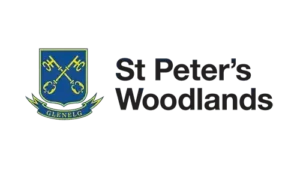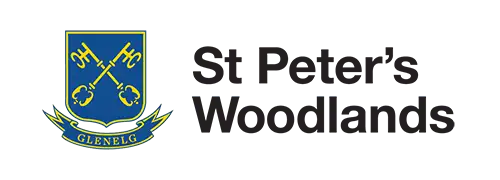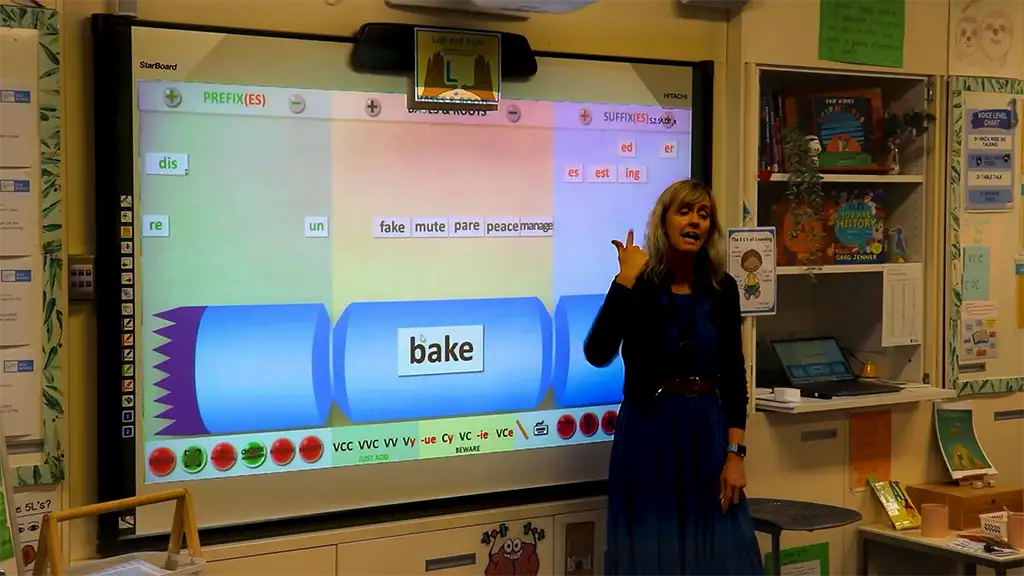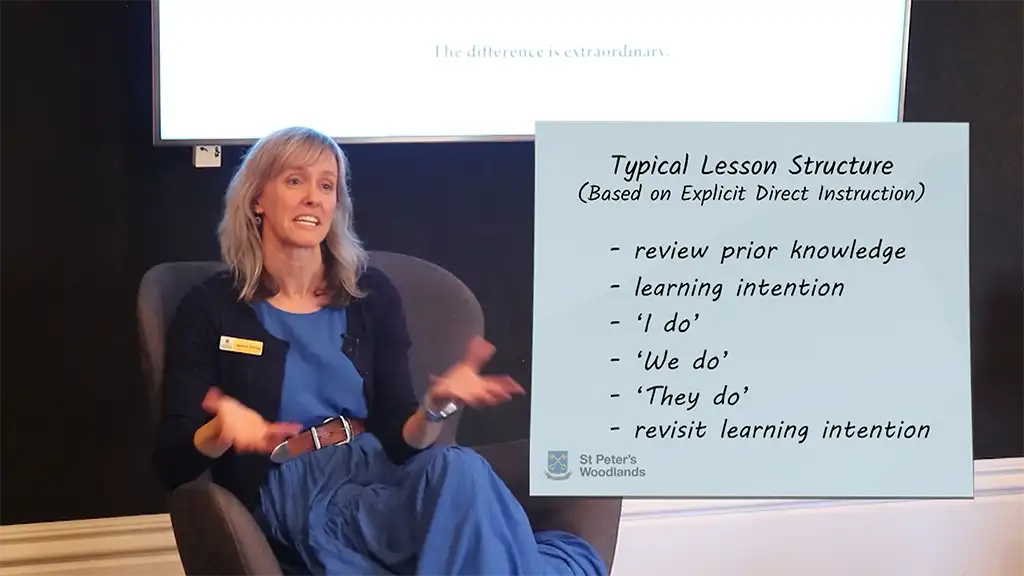Why 96% of St Peters Woodlands year-one students perform at, or above, literacy benchmarks!
Watch the Video and read on to discover exactly how St Peter’s Woodlands Grammar School transformed their literacy education by embedding the science of reading across the whole school, using explicit direct instruction principles and Word Cracker morphology resources and tools.
Prior to the transformation, the school took a whole language and balanced literacy approach to teaching reading, resulting in 40% of their students requiring Tier 3 literacy intervention. Find out why 96% of St Peters Woodlands year one students now perform at or above literacy benchmarks!
Located in South Australia, St Peter’s Woodlands Grammar School is dedicated to nurturing young minds from ages two through twelve.
Since its inception in 1999, this Anglican institution has consistently placed itself at the forefront of educational innovation, embarking on journeys to enrich the learning experience for every child who steps through its gates.
The school is more than just a place of learning; it’s a vibrant community where inquisitive minds are welcomed and celebrated—where every child is given the space to grow, inspired by the core values of Wonder, Courage, Respect, and Service.
Moving From Balanced Literacy To The Science of Reading
The concept of the Science of Reading represents a profound shift from traditional literacy teaching methodologies, such as the whole language and balanced literacy approaches, to a more evidence-based framework. This shift is not about adopting a new program but embracing a vast and interdisciplinary body of research.
“part of that was making a key appointment of having a literacy coach who works alongside the teachers to ensure that that’s happening and rolling out in classrooms.”
This research provides comprehensive insights into the best practices for literacy instruction, informed by cognitive science, psychology, education, and neuroscience.
The Science of Reading scrutinizes the cognitive mechanisms involved in how children learn. It looks at reading’s phonological aspects, which involve the sounds of language, and how young learners come to understand that words are made up of these sounds (a process known as phonemic awareness). It also explores the connection between these sounds and their written representation, known as graphemes, forming the foundation of phonics instruction.
Unlike the whole language approach, which often relies on the context and visual cues for word recognition, or the balanced literacy approach, which attempts to combine phonics with whole language theories, structured literacy is explicit and systematic. It involves a carefully sequenced plan of instruction that begins with the simplest and most fundamental skills before progressing to more complex ones. This progression is meticulously designed to build upon each previously mastered skill, minimizing gaps in a child’s literacy development.
The importance of morphology
A key term within structured literacy is morphology. Morphology, simply put, is the study of the structure and form of words, which includes understanding how different components like prefixes, suffixes, and roots come together to create meaning. But it’s more than just a segment of vocabulary; it’s also about spelling, how words are built, and their connection to historical linguistic development.
For many students, especially those with dyslexia, learning to grasp these morphological constructs requires explicit and systematic instruction. Words in English often carry their history in their spelling, which can be puzzling for those expecting consistent phonetic logic. St Peter’s Woodlands addresses these intricacies by teaching morphology in a way that unveils the logic behind the language, providing clear answers to questions that can stump even the most curious minds.
In addition, structured literacy emphasizes the importance of vocabulary and fluency. Vocabulary instruction involves directly teaching the meanings of words and strategies for understanding unknown words within texts. Fluency is the ability to read with speed, accuracy, and proper expression, all of which contribute to reading comprehension.
Structured literacy also involves teaching syntax, the set of rules, principles, and processes that dictate the structure of sentences in a given language. Syntax instruction helps students understand sentence structure, which is vital for reading comprehension and coherent writing.
For educators, a structured literacy approach and the adherence to a low-variance curriculum provide a clear and concise roadmap for literacy instruction. This approach breaks down the literacy block into its fundamental components, ensuring that teachers cover all necessary aspects of reading instruction. With a focus on phonology, morphology, vocabulary, fluency, and syntax, and their interrelatedness in reading, spelling, and writing, teachers can deliver comprehensive, effective literacy education.
The Word Cracker
Making Morphology instruction easy and effective
The Word Cracker has become an essential part of literacy education for those at St Peter’s Woodlands, enabling students to understand and apply complex spelling rules and enrich their vocabulary. The enthusiasm for Word Cracker among students and teachers alike is a testament to its effectiveness in making the complexities of English morphology accessible and engaging.
Developed by the collaborative efforts of Bill Hansberry, Sally Andrew, and Michael Shanahan, the Word Cracker is an innovative educational tool designed to bring clarity to the complex process of word formation. This initiative sprang from Sally’s study on morphology in the UK and a shared understanding of its significance to literacy development. The Word Cracker began as a physical magnet board, which has since evolved into an online resource, extending its reach to classrooms globally, particularly for tier-one instruction.
The Genesis of Word Cracker
Sally’s insights into the importance of morphology – the study of word forms and structures – led to the creation of this multisensory teaching tool to aid in literacy intervention. The Word Cracker is designed to physically and visually demonstrate the boundaries within words, helping students grasp where one morpheme ends and another begins. Bill emphasizes the importance of this visual separation, especially for students with learning difficulties who may not naturally perceive morphemic or syllabic boundaries in words.
Student Engagement and Learning
The tactile and visual components of Word Cracker make it a hit among students. The ability to manipulate prefixes, bases, and suffixes on tiles and whiteboards allows them to construct and deconstruct words, deepening their understanding of word meaning and structure. The instant visual feedback from the program, with cues like “Beware” and “Just add,” offers a fun and interactive learning experience.
Teacher Support and Cognitive Load Reduction
Teachers like Mrs. Gilding have found that Word Cracker reduces their cognitive load, providing a clear guide for instruction. The program’s structure instils confidence, allowing educators to incorporate their own word lists and tailor lessons to their students’ needs. It facilitates quick checks and assessments, enabling immediate reteaching opportunities.
Literacy Advancement and the Science of Reading
Schools committed to the principles of the Science of Reading or the Science of Learning recognize the value of teaching literacy in a structured manner. Word Cracker aligns with this philosophy by supporting the explicit teaching of phonics and grapheme-phoneme correspondence, and it introduces students to the morphemic structure of words from the very beginning of their literacy journey.
Explicit Direct Instruction
A Day in the Life of Literacy Learning at St Peter's Woodlands
At St Peter’s Woodlands, explicit direct instruction (EDI) forms the backbone of daily literacy lessons, a practice that is as disciplined as it is dynamic.
The school’s approach begins with a review, a strategy designed to access and activate students’ long-term memories, connecting what they have learned and the new skills they are about to acquire.
Starting with Review and Clarity
Each lesson kicks off by tuning into the students’ prior knowledge, which serves as a springboard for the day’s learning. This is followed by setting a clear learning intention shared with the students to ensure they understand the session’s goals. This clarity of purpose is crucial, as it gives students a clear target for their learning activities and a benchmark to measure their own progress.
The ‘I Do, We Do, You Do’ Model
The St Peter’s Woodlands instructional model follows the well-established ‘I do, We do, You do’ framework. Initially, the teacher leads the lesson, demonstrating the new concept or skill while the students observe and follow along. This ‘I do’ phase is where the teacher models the expected learning outcome, providing a clear example for students to emulate.
Transitioning into the ‘We do’ phase, the class engages with the material together, allowing for guided practice. This collaborative approach allows students to apply what they’ve observed and allows the teacher to assess understanding and provide immediate feedback or correction.
Finally, in the ‘You do’ phase, students are given the opportunity to practice independently. This is where they consolidate their learning, applying the new skills or concepts on their own. This progression from guided to independent practice reinforces learning and encourages retention.
Explicit instruction Engages Students
The school recognizes that EDI can be lively and engaging. By incorporating routines and activities that are both structured and enjoyable, lessons are designed to resonate with students, aiding in long-term retention and keeping them alert and focused.
Interventions and Multisensory Learning
Tools like Word Cracker are invaluable for students who require additional support, such as those in intervention programs. They provide a concrete means of visualizing and manipulating the parts of words, making the abstract concepts of phonics and morphology more concrete and understandable.
Incorporating Multisensory Approaches into Literacy Interventions
St Peter’s Woodlands is at the forefront of literacy intervention by adopting multisensory techniques, particularly through implementing the Word Cracker program. The school employs a highly skilled Educational Support Officer (ESO) who spearheads this initiative, integrating Word Cracker into the curriculum to provide a comprehensive and effective learning experience.
The flexibility of the Word Cracker means it can be used to enhance well-known programs such as Spelling through Morphographs to make them more multisensory and interactive. By utilizing the tools and resources of The Word Cracker, the school enhances its existing programs, offering students a rich multisensory experience that significantly aids in expanding their vocabulary and improving spelling and comprehension.
The Impact of a Structured Approach on Overall Learning
The focus on literacy and EDI at St Peter’s Woodlands is not limited to reading and writing. The school has observed a ripple effect, with improvements in literacy positively influencing other areas of learning, including numeracy. This correlation highlights literacy’s fundamental role in the broader educational experience.
The Far-Reaching Effects of Structured Literacy Instruction
St Peter’s Woodlands’ commitment to literacy excellence has yielded remarkable outcomes beyond literacy. The school has observed a positive correlation between high-quality literacy teaching and improvements in other academic areas, including numeracy. This uplift in classroom teaching quality contributes to an upward trajectory in student performance.
The results speak for themselves, with 96% of Year One students performing at or above the literacy benchmark. This achievement stands as a testament to the effectiveness of the school’s literacy strategies and the potential of tools like Word Cracker to profoundly impact learning outcomes.
The enthusiasm for Word Cracking is palpable, with one student saying:
“I think the Word Cracker should be used around the world, so people can learn about prefixes, suffixes and base words and learn new sorts of words and some new strategies for spelling.”
Morphology training
We have a comprehensive morphology training course if you want to learn more about morphology and how to teach it.




